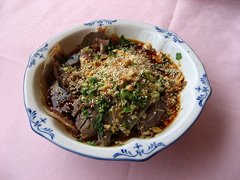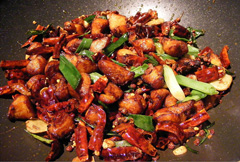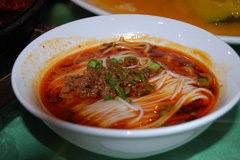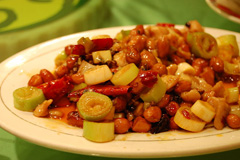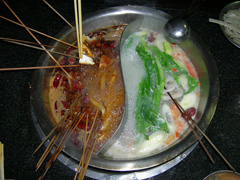About Szechuan garden and reviews
Enjoy the life, Enjoy the best food
Unique cooking style with rich flavors and spices has led to the increase in popularity of Szechuan cuisines. The Szechuan pepper, also known as the Flower Pepper, gives off a mouth-watering fragrance and provides a citrus-like flavor that is followed by a tingly sensation. With such a powerful and flavorful ingredient, a Szechuan cuisine enlivens your taste buds with a combination of spicy, sweet, and sour flavorings with any selected Szechuan dish.
Szechuan Garden bring this unique and exceptional cuisine to Park Slop for all to enjoy. At the Szechuan Garden, we strive to bring you the finest Szechuan cuisine with the friendlies of service to ensure a satisfying experience all around. By using top quality ingredients and spices, we provide the taste buds with an experience that cannot be forgotten. Szechuan Garden maintains these explosive and mouth-watering flavors with classical and signature Szechuan dish.
In the midst of eating our dishes you will experience an adventure for your taste buds and at the same time leave extremely satisfied and striving for more. Our authentic and signature selection will not let your taste buds down.
"Enjoyment of life derives from the enjoyment of food. That is our attitude."
History
Sichuan cuisine originating from Sichuan, China is sometimes known as "heavenly country" due to its abundance of food and natural resources. Based on at least one ancient Chinese account, "people of Sichuan uphold good flavor, and they are fond of hot and spicy taste." Despite Sichuan cuisine reputation as being spicy, only a small portion of the food is spicy and according to at least one Chinese culinary writer the Sichuan cuisine is composed of seven basic flavors: Sour, pungent, hot, sweet, bitter, aromatic, and salty. Generally throughout its history, there have been five different type of Sichuan foods: Sumptuous banquet, ordinary banquet, popularized food, home-style food, and food snacks. Sichuan cuisine has changed little over the years and remains a staple of Chinese cuisine.
Representative dishes
Some well-known Szechuan dishes include Gongbao or Kung Pao chicken and Twice Cooked Pork. Although many dishes live up to their spicy reputation, often ignored are the large percentage of recipes that use little or no hot spices at all, including dishes such as Tea Smoked Duck.
(Kung Pao chicken, Tea smoked duck, Twice cooked pork, Mapo tofu, Sichuan hotpot, Fuqi Feipian, Spicy deep-fried chicken, Shuizhu dishes, Dan dan noodles, Bon bon chicken)
Preparations
Szechuan cuisine often contains food preserved through pickling, salting, and drying and is generally spicy due to heavy application of chilli oil. The Sichuan peppercorn huājiāo 花椒 ('flower pepper') is commonly used. Szechuan pepper has an intensely fragrant, citrus-like flavour and produces a "tingly-numbing" (Chinese: 麻) sensation in the mouth. Also common are garlic, chili, ginger, star anise and other spicy herbs, plants and spices. Broad bean chili paste (simplified Chinese: 豆瓣酱; traditional Chinese: 豆瓣醬; pinyin: dòubànjiàng) is also a staple seasoning in Sichuan cuisine. The region's cuisine has also been the originator of several prominent sauces widely used in Chinese cuisine as a whole today, including yuxiang (魚香), mala (麻辣), and guaiwei (怪味).Szechuan Cuisine
Szechuan cuisine, Sichuan cuisine, or Szechwan cuisine (Chinese: 四川菜; pinyin: Sichuancai or Chinese: 川菜; pinyin: chuancai) is a style of Chinese cuisine originating in the Sichuan Province of southwestern China famed for bold flavors, particularly the pungency and spiciness resulting from liberal use of garlic and chili peppers, as well as the unique flavour of the Sichuan peppercorn (花椒). Peanuts, sesame paste, and ginger are also prominent ingredients in Szechuan cooking. Although the region is now romanized as Sichuan, the cuisine is still often spelled Szechuan or Szechwan in North America. There are many local variations of Sichuan cuisine within Sichuan Province and the Chongqing Municipality, which was politically part of Sichuan until 1997. The four best known regional sub-styles are Chongqing style, Chengdu style, Zigong style, and Buddhist vegetarian style. UNESCO has declared the city of Chengdu to be a city of Gastronomy in 2011, mainly because of its Szechuan style of cooking.
FREE DELIVERY
 Business Hours:
Business Hours:Mon. -Thurs.: 11:30am - 10:30pm
Fri. & Sat.: 11:30am - 11:00pm
Sunday: 12:30pm - 10:30pm
TEL: (718) 788 - 2886
(718) 788 - 0788463 7th Ave, Park Slope,
(Corner of 16th St.)
Brooklyn, NY 11215
Reviews:
CanRoxygo
this is a really nice Szechuan restaurant that have obviously been in business for awhile. The staff is very friendly, the food is really good and they have lots of special dishes. I like black bean and spicy dishes and LOVED this food!





